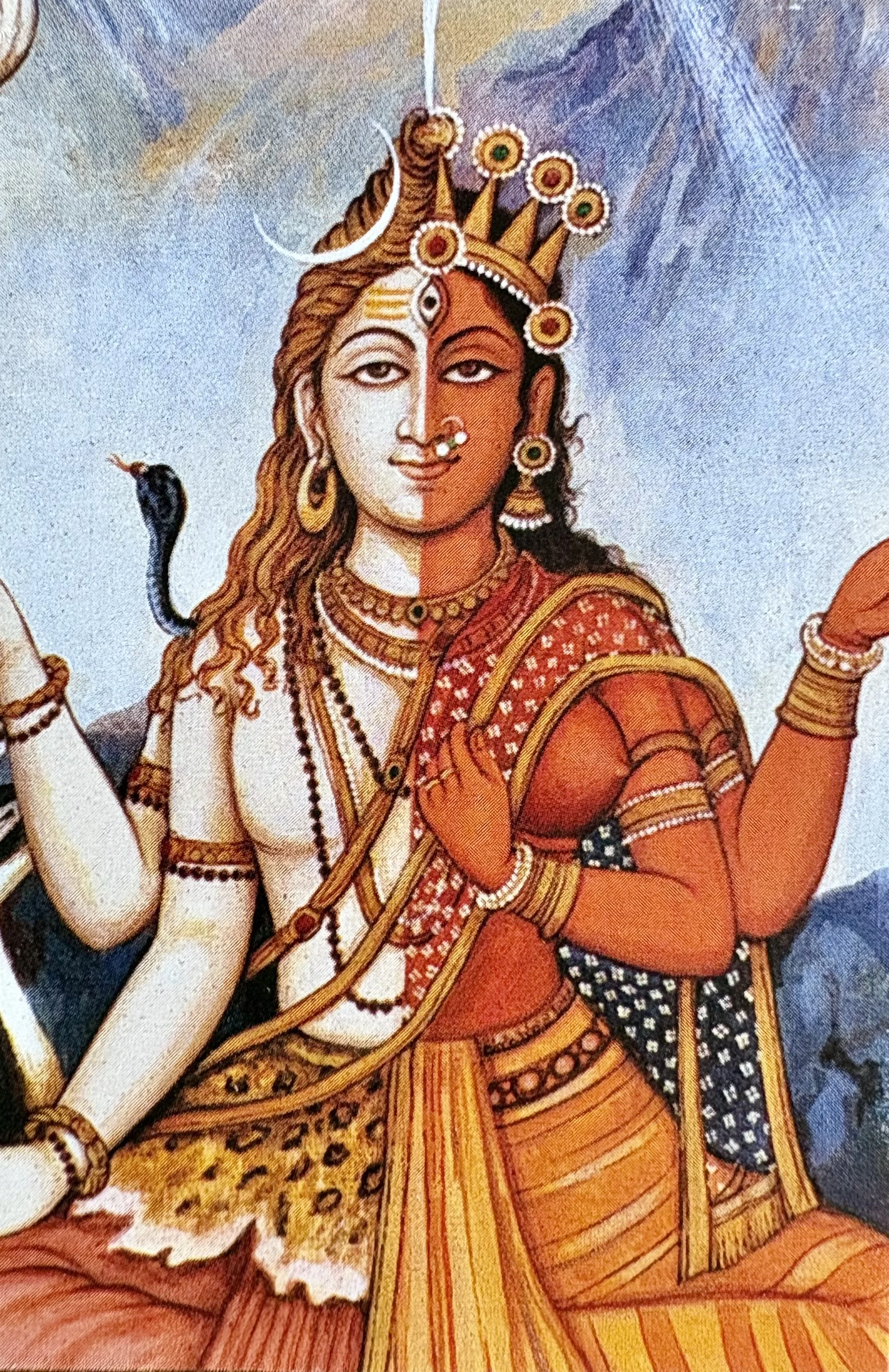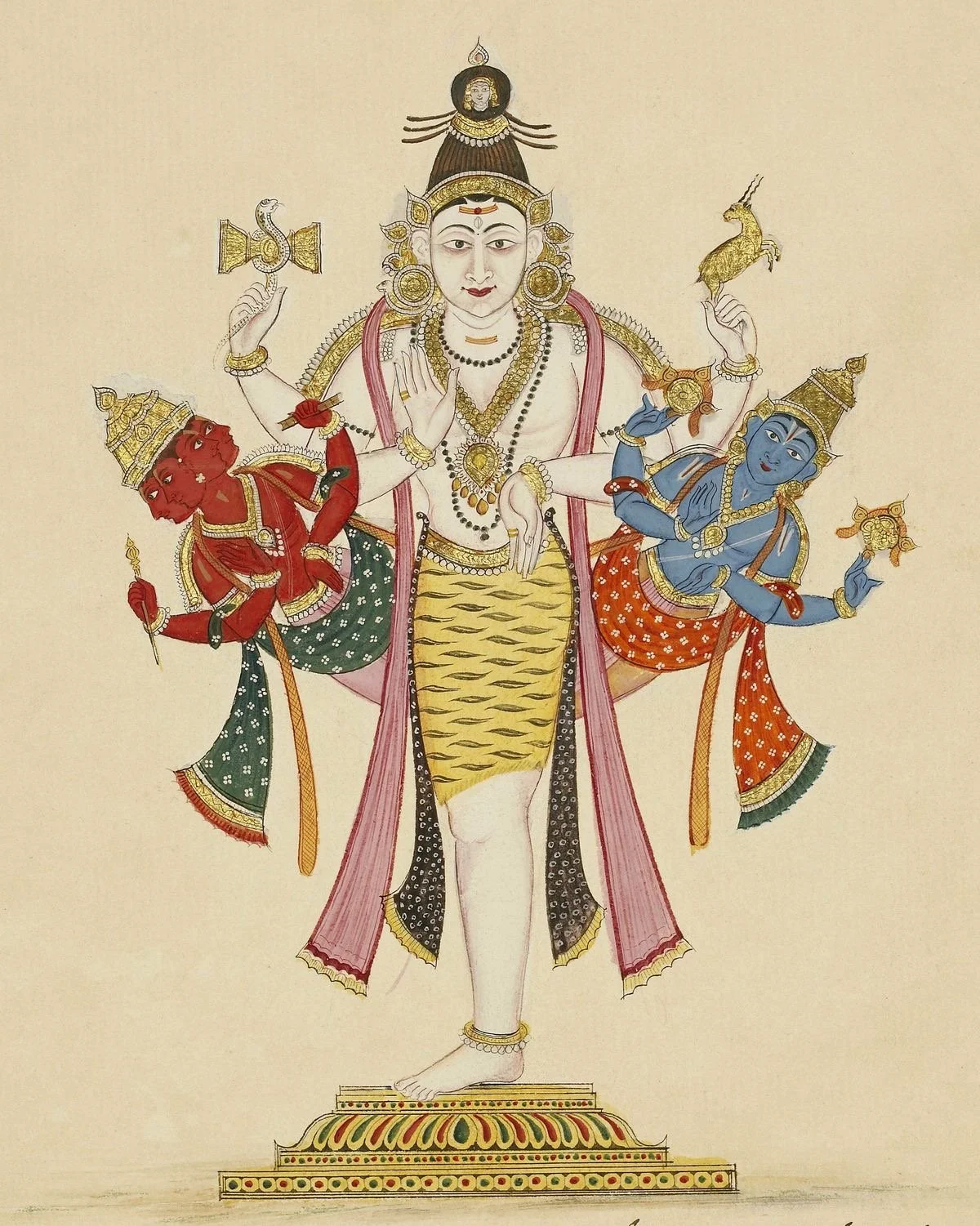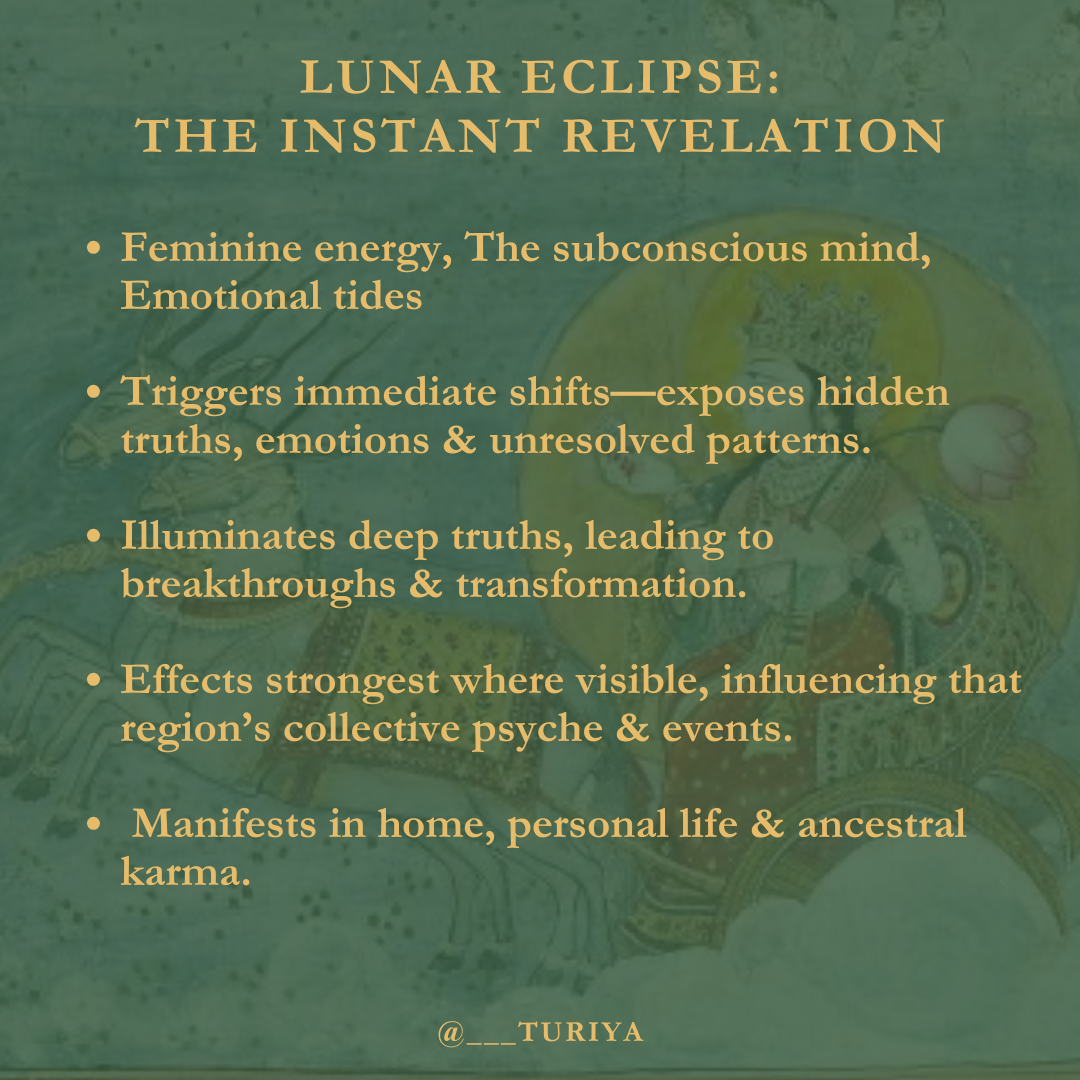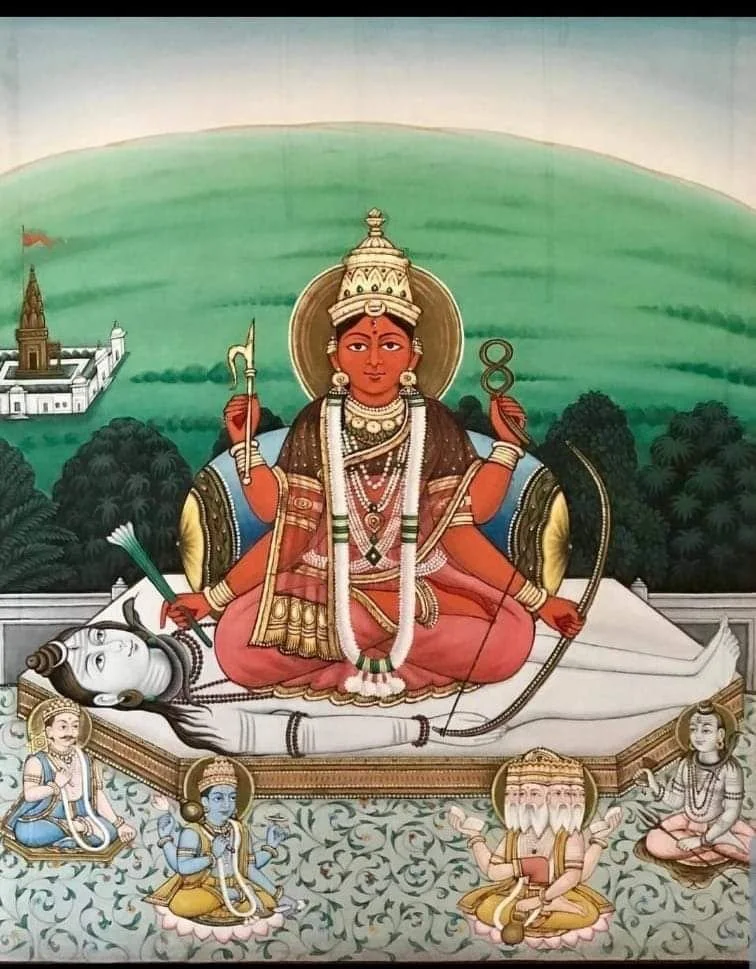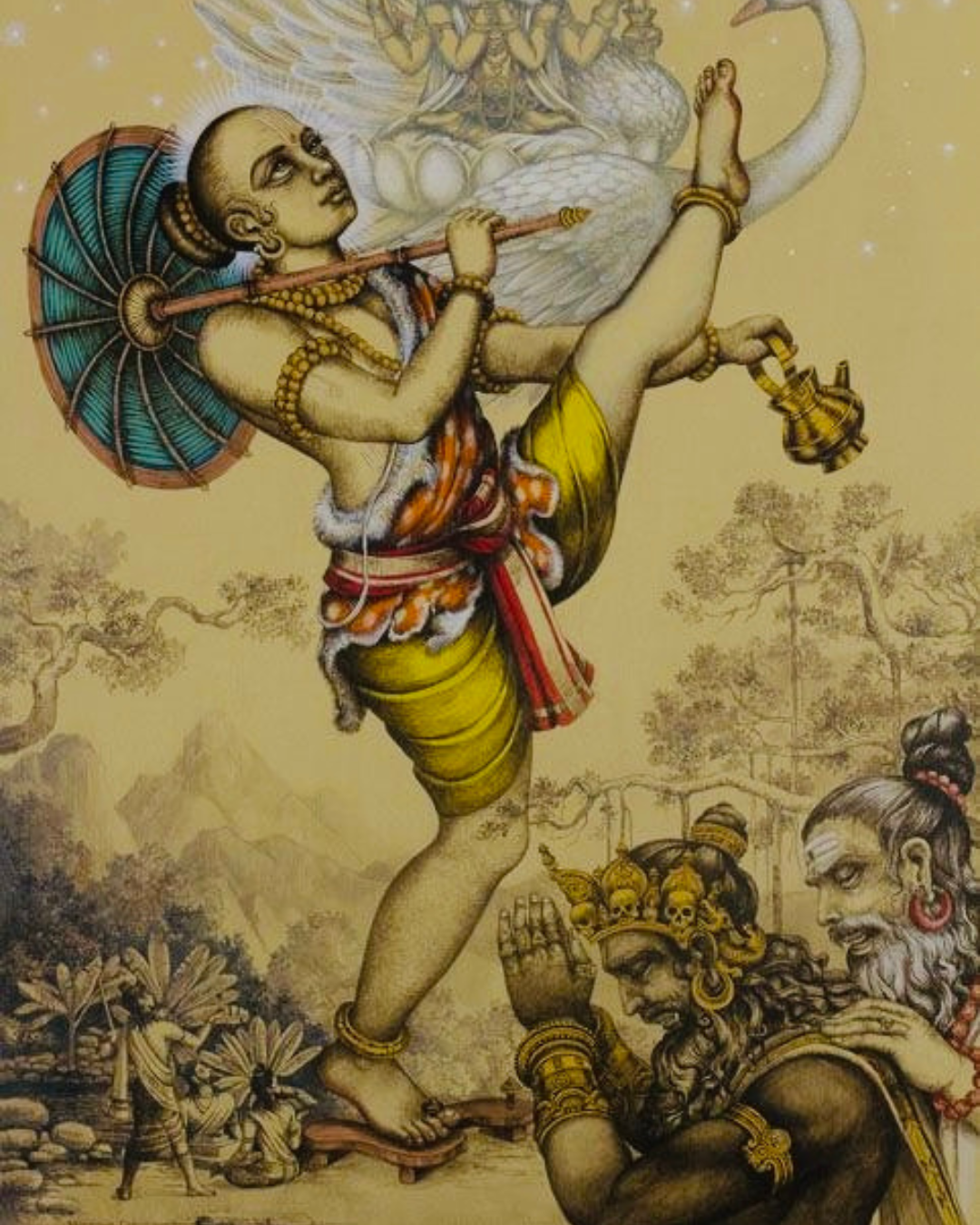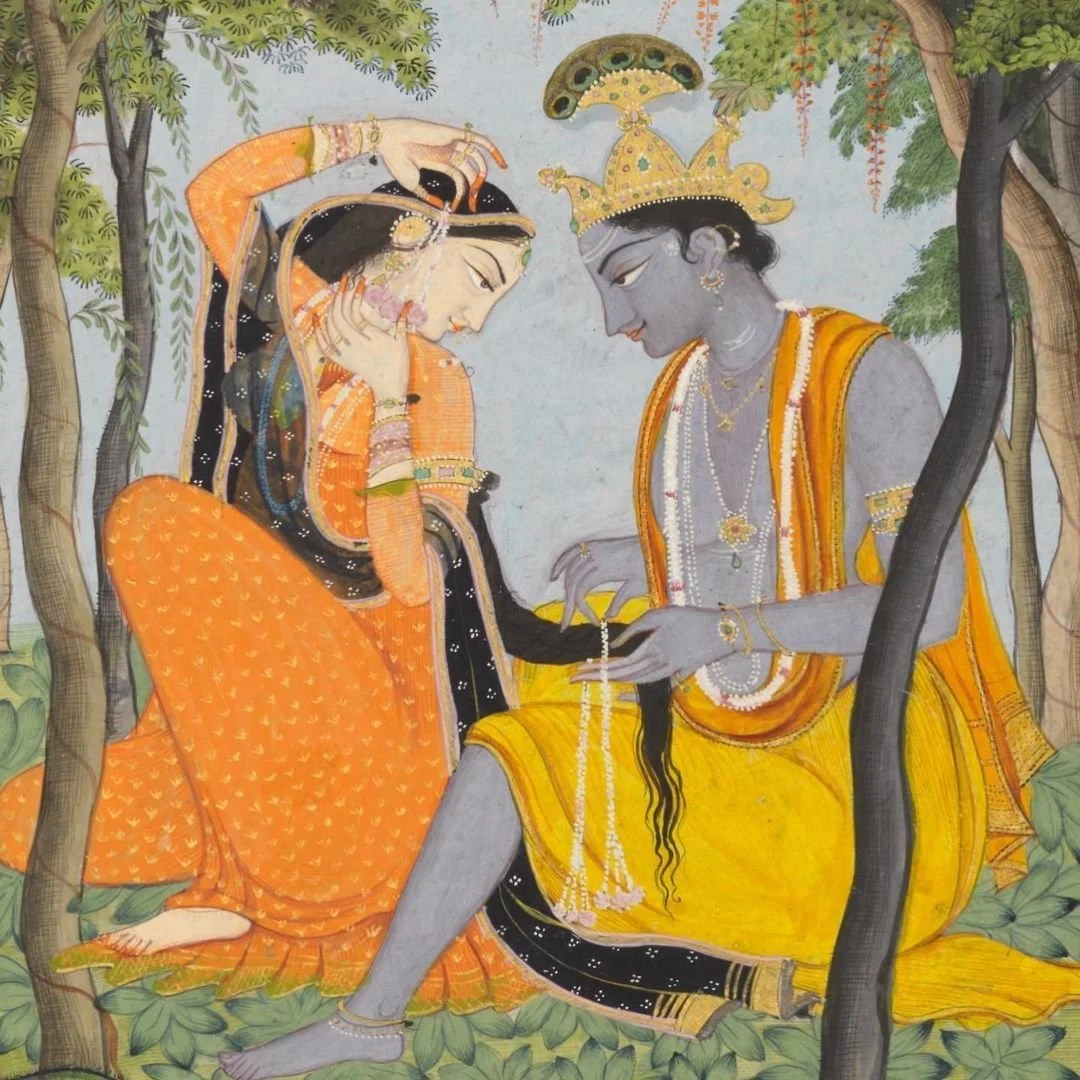FULL MOON LUNAR ECLIPSE
Artwork: Mandala Publishing
Sept 7th, 11:08 AM PST | 23:38 IST
As the Earth passes between the Sun and Moon, a shadow is cast on the lunar surface, commencing eclipse season with a total lunar eclipse पूर्णचन्द्रग्रहणम् (Pūrṇa-candra-grahaṇam) in the Vedic Lunar mansion of Pūrvabhādrapadā पूर्वभाद्रपदा (Aquarius), the Scorching Star. This cycle urges us to refine our inner compass, untangle and release an old karmic pattern.
Lunar eclipses are thresholds, thinning the veil between seen and unseen. That which is ready to be healed surfaces now. This dynamic cycle is ripe for accelerated spiritual growth — missing pieces can be reassessed for course correction and redesigning of the physical architecture of your life.
We are stepping into a realm beyond time, where things may not be as they appear. Lunar eclipses serve as triggers, offering sudden exposure to hidden truths, intensifying emotions and—perhaps—beckoning an instant revelation.
The points where the Sun and Moon intersect the ecliptic plane, positioned exactly 180 degrees apart, are known as the lunar nodes, or Rāhu and Ketu in Vedic Astrology. These shadowy grahas, often called the "great awakeners," govern the eclipses and symbolize the eternal dance between light and darkness, offering us the opportunity to confront our shadows, disrupt old patterns, and awaken to deeper truths along our journey.
Heightened emotions, hidden energies, and truths, long concealed come to light. With the moon eclipsed, you may find yourself at a turning point—on the verge of a decision, exhausted, or facing uncertainty. This portal holds to shift you into a new timeline.
A breakthrough is possible now. An old pattern may resurface—don’t touch what is coming up—hold space and let it go. Pūrvabhādrapadā is symbolized by metamorphosis, rebirth, perseverance, and the undifferentiated fire energy that has the capacity to raise our consciousness. This constellation, being one of the birth stars of Mercury, represents the chaos and turmoil of fragmentation that births the wisdom of neutrality.
Pinterest: Aja Ekapāda
The Burning Pair’s deity (Aja Ekapāda) stands on one leg and has two heads—split yet able to see in both directions, seeking to bridge heaven and earth, possessing the power to elevate through sacrifice—the Yajamāna Udyamana Śakti, the force that uplifts the evolutionary fire.
An alchemical process initiates here, as discipline and renunciation refine raw potential into awakened wisdom. This nakṣatra does not merely demand confrontation with duality; it invites us into a dance of integration, where material ambition and spiritual transcendence find their rightful place.
How we steward vast reservoirs of life force energy defines this cycle—shaping our capacity to channel intensity into focused intention, while cultivating inner contentment amidst dynamic flux.
Symbolized by a funeral pyre, we find ourselves standing at the precipice of transformation, where the purifying fire of Rūdra dissolves illusion. While Rāhu’s presence here may manifest through sudden and unpredictable karma-phala, it ultimately compels a dismantling of rigid ideologies, allowing limitation to be transmuted into higher understanding.
With the responsibility of breathing life into new architecture, we become most in need of balance. The fine tuning point between self and other—anchoring into and committing fully to self sovereignty and taking full responsibility for yourself, while practicing the grace of presence and participation within this co-created dream. Choosing wisely in the direction of what is truly beneficial.
Pay close attention if you have major planets — your Sun, Moon, or Lagna (rising sign) — in Pūrvabhādrapadā, as this cycle could bring sudden change, bring forward something you didn’t plan for, or reveal something deeper about yourself. Also, take note if you are currently running a dāśā (cycle) or antar dāśā (sub-cycle) of Rāhu, Ketu, Sun, Moon, or Jupiter.
One of my teachers has also recommended listening to or chanting Śrī Lalitā Sahasranāma Stotram during the eclipse hours. I personally enjoy this rendition on Spotify and the one on Maharishi Veda app— (which also includes other beautiful and traditional vedic rāga and chants).
This is a threshold for deep personal sādhana. The ancients regarded eclipses as sacred—consuming less, fasting, and turning inward to keep their channels clear. Fasting, meditation, and japa are recommended to optimize this shift, and it is ideal to postpone major decisions and commitments during this period.
What familiar holding patterns are you ready to transcend?
All My Relations
Tulsi
September 7th also begins Pitru Pakṣa, the sacred fortnight dedicated to honoring our ancestors. This two-week period culminates with the new moon on September 21st/22nd, known as Sarvapitṛ Amāvasyā or Mahālaya Amāvasyā. Traditionally, offerings (tarpana, śrāddha) are made to nourish ancestral lineages, invoking blessings and clearing karmic debts.
Full Moon: Pūrvabhādrapadā (Aquarius)
Sept 7th, 11:08 AM PST | 23:38 IST
Eclipse Timing
PST: Sept 7, 8:28 AM – 1:55 PM
IST: Sept 7, 8:58 PM – Sept 8, 2:25 AM
Next: New Moon Solar Eclipse — Sept 21/22
“Write all that worries you on a piece of parchment;
Offer it to God
Even from the distance
of a millennium I can lean the flame
in my heart
Into your life
And turn
All that frightens you
Into holy Incense Ash."
~Hafiz








